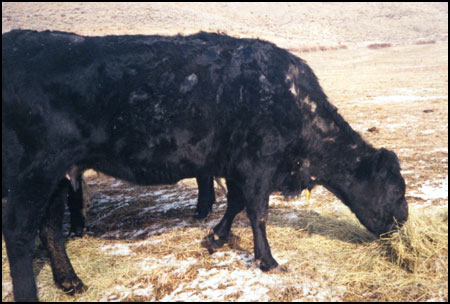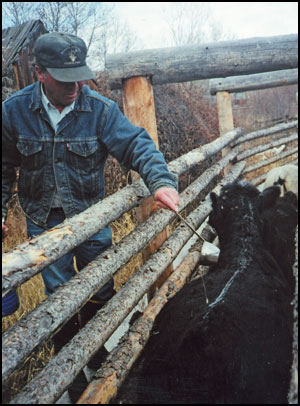Controlling Lice in Beef Cattle

Lice are a common winter problem, especially in cold climates. Lee Townsend, Extension entomologist, University of Kentucky, says there's not much that's really new for lice control. "The pyrethroid insecticides are still effective against all types of lice," he says.
Diligent lice control can effectively eliminate lice in most herds. He cites a European study that looked at attempts to eradicate both sucking and chewing lice in herds. Elimination was successful in 85% of the study herds (28 out of 33 herds).
"Strategies included application of insecticides — two treatments about three weeks apart — culling any carrier animals (reservoirs of lice), and quarantine/treatment of any new animals brought into those herds," Townsend says.
Lice were seen again in five of the 28 herds within three to six months after treatment, and were back in nine of the 28 herds within a year.
 "Factors associated with reinfestation of lice included purchase of livestock (bringing lice-infested animals into the herd), failure to treat newly introduced animals or missing one of the two treatments, and mixing treated with untreated cattle due to fencing problems," Townsend explains.
"Factors associated with reinfestation of lice included purchase of livestock (bringing lice-infested animals into the herd), failure to treat newly introduced animals or missing one of the two treatments, and mixing treated with untreated cattle due to fencing problems," Townsend explains.
If a producer doesn't make sure all the animals on the farm get treated, or fails to follow up with a second treatment, there will be residual lice population on some animals, and they will pass lice to the rest of the herd.
"Giving the two treatments three weeks apart is an important key. The products used don't work against the egg stage. The first treatment should get most of the lice that are active — the adults and nymphs," he says. The eggs on the hairs survive, however, to hatch later.
If you fail to treat even one or two animals with the second treatment, eggs on their hair coat will hatch and could provide enough lice, over time, to be a source of reinfestation for the entire herd, he says.
"If there are several hundred lice per animal and you only get 90% control with a certain treatment, this still leaves a fair number of lice to start the infestation coming back again," Townsend says. Systemic products commonly used today may kill most of the blood-sucking lice, but don't give much control of chewing lice. This makes it harder to get rid of lice in a herd.

[Click here to go to the top of the page.]









